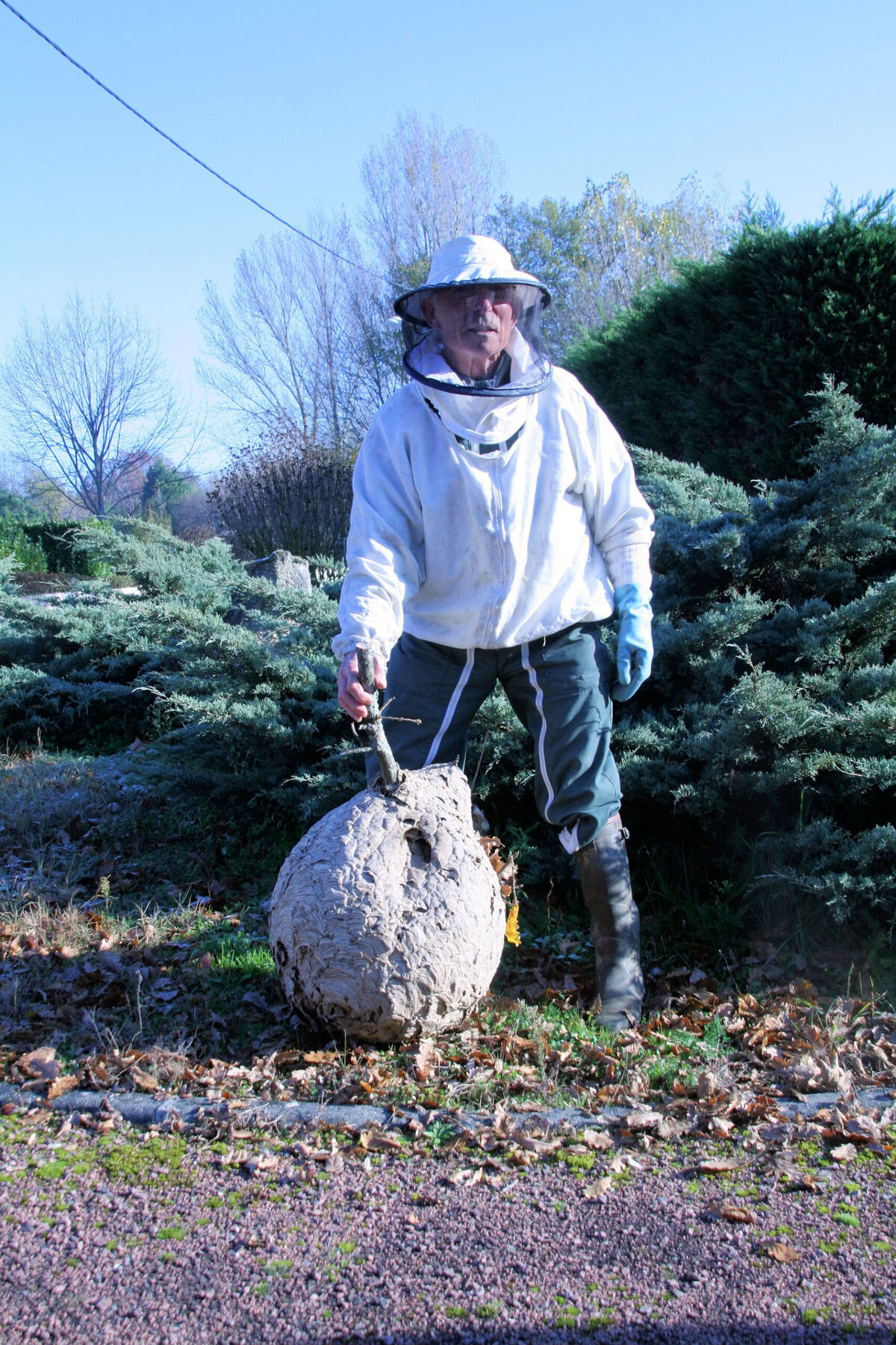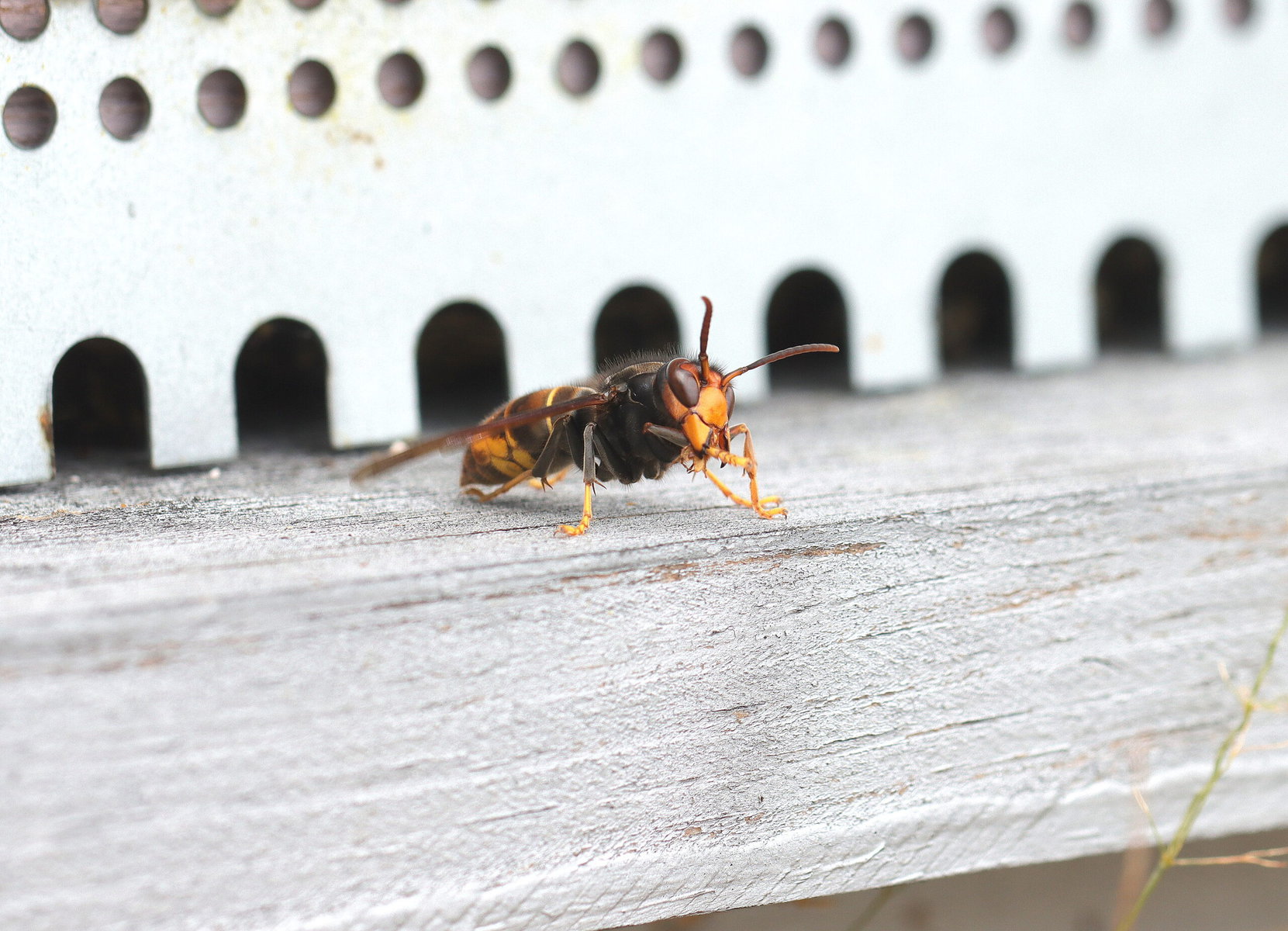By 2021, Michel Costa had become a frustrated veteran of an obscure yet devastating war in Europe. The enemy: invasive Asian hornets, which had been massacring his honey bees by the thousand. Costa had fought the invaders on the outskirts of Bordeaux, France, swatting them with an electric racket as they hovered outside his hives. He had taken the battle to the trees, crystallizing them by injecting their nests with a chemical disinfectant. And he had fought them from the ground, blasting the highest of their nests into oblivion with a troop of local hunters armed with shotguns. But whatever Costa and his comrades tried, the hornets kept coming.


So that year, when Costa, a retiree and avid beekeeper, discovered a new weapon with the potential to change the course of the entire war, he was intrigued. Several companies had begun selling so-called “electric harps,” which they claimed could kill the hornets in droves by electrocuting them as they flew through. When a nearby apiary reported problems with a swarm of them, he leapt at the opportunity to test one, placing it on top of a bin where hornets had gathered. Costa then watched in awe as the harp killed “hundreds” of them, one by one, within minutes. “The demonstration of its effectiveness was staggering,” he says.
Until that day, Costa and many other European beekeepers had struggled to find any efficient means of repelling the hornets’ attacks. Asian hornets first arrived in France from China in 2004, having hitched a ride in a shipping crate. Back in their Asian homeland, they predate a diverse diet of other creatures, including honey bees. The honey bees indigenous to those territories have evolved strategies to evade the marauding hornets over time. But the hornets’ invasion of Europe caught local honey bees defenseless. According to one estimate, an Asian hornet can decapitate, dismember and feed the vulnerable European honey bees to their larvae at a rate of 30 per day.
The hornets have been causing chaos in apiaries across western Europe, penetrating deeper into the continent every year. First France fell, then Spain, Portugal, Italy, Britain, Austria, Germany, Belgium and others. One scientific analysis estimated that up to 29 percent of France’s bee colonies could collapse every year as a result. Other countries came to similar conclusions. This not only increases the cost of honey production, but also places entire ecosystems at risk as a result of the reduced pollination activity, in which honey bees play a significant part. And this threat is no longer contained within Europe. In August 2023, scientists confirmed that Asian hornets had flown into US airspace for the first time.


Because European honey bees are unable to protect themselves, beekeepers and scientists have over the past couple of decades been experimenting with different means of defending them. They tried trapping the queen hornets, hunting the hornets’ nests and protecting the honey bees’ hives with special “muzzles” that prevented the hornets from entering. But whatever they tried, the solution proved unsustainable (because of expense or time), ineffective or unacceptably harmful to other animal species.
Even concerted, organized attempts to search for and destroy the nests have proven unsuccessful in eliminating the hornets, according to French entomologist Denis Thiéry, one of the first to start studying them. “Even if you trap 20 queens,” he says, “it is like a drop of water in the sea.”

